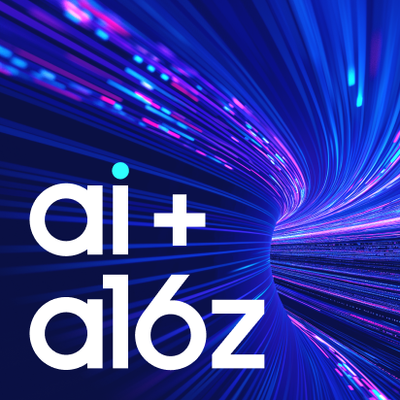debug-gym: A Text-Based Environment for Interactive Debugging
debug-gym is a text-based interactive debugging framework, designed for debugging Python programs.
[Technical Report] [Project Page]
1. Installation
conda create -n debug-gym python=3.12
conda activate debug-gym
pip install -e .
To install the development dependencies:
pip install -e '.[dev]'
Set your API information in llm.yaml
First, create an LLM config template by running the debug-gym-init-llm-config entrypoint:
python -m debug_gym.init_llm_config ~/.config/debug_gym
[!TIP]
Run debug-gym-init-llm-config --help for more options. By default, the template is created at ~/.config/debug_gym/llm.yaml, but you can specify any directory.
Then, edit this file with your endpoint and credentials. You can choose one of these authentication methods:
- For authenticating with an API key, provide
api_key.
- For
az login or Managed Identity authentication on Azure, remove api_key and include scope instead.
[!WARNING]
When using open-sourced LLMs, e.g., via vLLM, you need to correctly setup HF_TOKEN required by the tokenizer.
By default, debug-gym looks for the LLM config file at ~/.config/debug_gym/llm.yaml. You can change this behavior by exporting the environment variable LLM_CONFIG_FILE_PATH or by setting llm_config_file_path in your script config file (see Running Baselines).
2. System Design
The structure of debug-gym is as below:
debug_gym
├── gym
│ ├── envs
│ ├── terminal
│ └── tools
└── agents
debug_gym.gym is a simulation environment. Given a code repository, an agent can iteratively interact with a set of tools, such as pdb, that are designed for investigate the code. Once gathered enough information, the agent can propose a patch that rewrites certain lines of the code. The terminal will subsequently execute the new code against a set of test cases.
debug_gym.agents are LLM-based debugging agents that use debug_gym.gym to interact with code repositories to seek necessary information and thus fix potential bugs. At an interaction step, the agent takes a text observation that describes the environment states and tool states as input, it is expected to generate a command, subsequently, the environment will provide a new text observation in response, describing the state change caused by that command.
2.1. Environment and Tools
Our base environment, RepoEnv, is an interactive environment that follows the Gymnasium paradigm. Once the environment env is instantiated, one can use env.reset() to start an episode and receives initial informations. Then, one can interact with the environment using env.step(action), where action specifies one of the available tools (see below), doing so will return subsequent informations (e.g, error message, debugger stdout, etc.)
One of the core designs of debug-gym is the notion of tools. Users can dynamically import tools, or develop customized tools and utilize them in the environment. Tools are modules that augment an agent's action space, observation space, or provide additonal functionalities to the agent. Below are the set of tools we have implemented so far.
listdir | It returns the directory tree at a given subdirectory. This is particularly useful when dealing with a repository with multiple files. |
view | It is used to change an agent's focus to a particular source code file. This is particularly useful when dealing with a repository with multiple files. |
eval | It runs the current code repository using the provided entrypoint (e.g., pytest), and returns the terminal's output (e.g., error message). |
pdb | Interactive debugger wrapping the Python pdb tool. In additon, users can choose to maintain a set of persistent breakpoints (as in some programming IDEs), which are not reset after every eval. With such feature, a new pdb debugging session is activated automatically, with all the breakpoints restored. Note such breakpoint can be cleared by pdb commands such as cl. |
rewrite | It can be used to rewrite a certain piece of code to fix the bug. The inputs of this tool call include the file path, the start and end line numbers, and the new code. |
Upon importing a tool, its action space and observation space will be automatically merged into debug-gym's action space and observation space; its instruction will also be merged into the overall instruction provided to the agent (e.g., as system prompt).
Users can include a .debugignore file in the repository to specify files and directories that are not visible to debug-gym, similarly, they can include a .debugreadonly to specify files and directories that are read only by the agents (e.g., the test files). Both files share the same syntax as .gitignore.
2.2. Agents
We provide the below LLM-based agents, they all have minimal design and serve the purpose of demonstrating the debug-gym APIs.
debug_agent | pdb, patcher, view, eval | A minimal agent that dumps all available information into its prompt and queries the LLM to generate a command. |
rewrite_agent | patcher, view, eval | A debug_agent but pdb tool is disabled (an agent keeps rewriting). |
debug_5_agent | pdb, patcher, view, eval | A debug_agent, but pdb tool is only enabled after certain amount of rewrites. |
2.3. Benchmarks
To demonstrate how to integrate debug-gym with coding tasks and repositories, we provide example code importing two widely used benchmarks, namely aider and swebench, and a small set of minimal buggy code snippets, namely mini_nightmare.
3. Running Baselines
We use .yaml files to specify configurations. Example config files can be found in scripts/. To run an agent:
python scripts/run.py scripts/config_<benchmark name>.yaml --agent <agent name>
Add -v, --debug to be verbose, or to enter debug mode.
[!WARNING]
When using --debug, you will need to press c to continue after each reasoning step.
3.1. Overriding Values in Config
-p is a handy way to override values defined in config. For example, the below command will run rewrite_agent agent on Aider with human mode (while in config file it specifies gpt-4o).
python scripts/run.py scripts/config_aider.yaml --agent rewrite_agent -v -p rewrite_agent.llm_name="human"
3.2. Debugging a Custom Repository
Modify scripts/config.yaml, especially the env_kwargs to set the path and entrypoint of the custom repository. We assume there is a .debugignore file and a .debugreadonly within the repository that labels files/folders that are not seen or not editable, respectively.
As an example, we provide a buggy pytorch code repository in data/pytorch.
python scripts/run.py scripts/config.yaml --agent <agent name>
3.3. Design Your Own Tool
debug-gym's modular design makes it extensible. Users are encouraged to extend debug-gym to their specific usecases, for example by creating new tools that diversify an agent's action and observation spaces. For detailed instruction on designing new tools that are debug-gym-compatible, please refer to the Technical Report.
Citation
tbd
Contributing
This project welcomes contributions and suggestions. Most contributions require you to agree to a
Contributor License Agreement (CLA) declaring that you have the right to, and actually do, grant us
the rights to use your contribution. For details, visit https://cla.opensource.microsoft.com.
When you submit a pull request, a CLA bot will automatically determine whether you need to provide
a CLA and decorate the PR appropriately (e.g., status check, comment). Simply follow the instructions
provided by the bot. You will only need to do this once across all repos using our CLA.
This project has adopted the Microsoft Open Source Code of Conduct.
For more information see the Code of Conduct FAQ or
contact opencode@microsoft.com with any additional questions or comments.
Trademarks
This project may contain trademarks or logos for projects, products, or services. Authorized use of Microsoft
trademarks or logos is subject to and must follow
Microsoft's Trademark & Brand Guidelines.
Use of Microsoft trademarks or logos in modified versions of this project must not cause confusion or imply Microsoft sponsorship.
Any use of third-party trademarks or logos are subject to those third-party's policies.
Privacy
This framework does not collect user's personal data. For more information about Microsoft's privacy policies. Please see Microsoft Privacy Statement.
Responsible AI
Please see our Responsible AI Statement.



